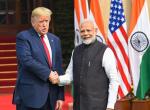Nuclear power producers have always had anxiety that a major nuclear accident anywhere in the world will deliver a crippling blow to the industry as a whole. Because of this collective interest, nuclear safety has always received pressing attention, irrespective of the geographical location of nuclear power plants. This might explain why during several decades of operation of hundreds of nuclear power plants across the globe, only two major accidents occurred, one in the US (Three Mile Island) and the second in the erstwhile Soviet Union (Chernobyl), and why the third at Fukushima in Japan is having such international impact.
The Fukushima disaster has rekindled all the latent concerns about the inherent risks associated with nuclear power. In the public mind the line between civilian and military nuclear power is thin, as the ingredients producing both kinds of power and the hazards from the release of lethal radioactivity are identical, the difference being that in one case the nuclear reaction is controlled for constructive, peaceful purposes, and in the other it is allowed to reach an explosive point for destructive, military ends. However, when the nuclear core of a civilian plant explodes, it recalls the explosion of a nuclear device. Which is why it is easy to conflate Fukushima with Hiroshima.
The nuclear accident in Japan has come at an inopportune time for India. Just when India has been released from nuclear sanctions and has access to raw materials and technology from abroad, enabling it to plan its nuclear future with greater assurance, recourse to nuclear power for energy security is now being challenged vigorously by civil society.
The arguments against nuclear power have substance, even as those in favour have practical merit. The inability of the Japanese authorities, despite the country’s advanced technological base and its organizational capacity, to quickly control the situation at Fukushima has exacerbated safety concerns. How will India, with its poor organizational performance demonstrated in so many areas of public responsibility, cope with a Fukushima like accident?
The clustering of nuclear power plants at one site, justifiable for reasons of economy, limited number of suitable sites and difficulties of land procurement, will now heighten local community concerns. India, too, like at Fukushima, is opting for clustered nuclear power plants, with six envisaged at Kudankulam and a similar number at other sites identified for foreign partners. With daily drama on television of problems cascading from one plant at Fukushima to another, such bunching could now stoke greater fear generally about attendant risks.
Today India produces about 4,000 MWs of nuclear energy, with a declared goal, prior to the nuclear deal, of producing 20,000 MWs by 2020, raising the share of nuclear power in the country’s energy mix from the present inadequate 2% to a more reasonable 10%. With the lifting of international sanctions and in tune with global visions of a nuclear renaissance spurred by depleting fossil fuel reserves and climate change pressures, India scaled up its nuclear power ambitions by projecting 63,000 MWs of nuclear power in 2032, including 40,000 MWs from imported reactors.
One trenchant critic notes that the Department of Atomic Energy’s (DAE’s) pre-2004 nuclear power plan envisages 208,000 MWs of nuclear power generated from domestic resources by 2052, which translates into over 208 nuclear power plants of 1000 MW capacity pock-marking the Indian coastal line (we have at present 17 operational indigenous reactors with 4 under construction, besides 2 imported Russian being erected at Kudankulam). In projections revised later the DAE calculates it can use the additional plutonium available from imported Light Water Reactors (40,000MWs) to boost power generation through fast breeder reactors by an additional 340,000 MWs, reaching a grandiose total of 655,000 MWs of nuclear power by 2050, that translates into a mind-boggling 655 nuclear power plants clustered into 109 six-reactor parks located 55 kilometers apart along our 6000 kilometres long coastline. Clearly these plans, fanciful even before Fukushima, would now appear quixotic.
India, too, is in a seismic zone, and as the power plants have to be sited near the coast because of huge quantities of water needed for cooling, the dread of an out-sized tsunami can always be invoked to contest even more modest Indian nuclear power plans. Arguments that sites in India are located in a lower category seismic zone and not the Himalayan one, and that the Indian coast line is shielded from out-sized tsunamis etc, do not cut ice with nuclear sceptics. That the Fukushima plant closed down automatically when the monstrous eartquake hit Japan, that but for a terrifying tsunami that wrecked the cooling system the accident would have been contained, and that all the casualties have occurred because of the tsunami and none is directly attributable to radioactivity, gets little traction. Critics also ignore India’s good nuclear safety record.
More importantly, India’s difficult energy scenario is not being addressed realistically. Experts point out that our per capita energy consumption must increase from its present abysmal levels of less than half of the average of non-OECD countries, and one-fourteenth of OECD countries, to sustain our growth rate of 8 to 9%, vital for poverty alleviation. Our coal reserves and hydro potential are totally inadequate for achieving any respectable figure of energy consumption for our population four decades ahead. Solar energy has to be cost-competitive, storage technologies have to be vastly improved and the constraints of land availability have to be overcome before this renewable energy source can be a panacea.
With 436 nuclear plants operating world wide, nuclear energy provides 14% of global electricity, with France relying on it for 75% of its electricity needs. Should India not target a figure of 10% of its energy needs being met by nuclear power in 2050? Would that be unreasonable when nuclear power today supplies 20% of US needs, 26% of Germany’s, 29% of Japan’s, 31% of South Korea’s, 38% of Sweden’s, 40% of Switzerland’s and almost 18% each of the UK and Russia?
The Fukushima disaster has compelled countries to look at nuclear power anew, in terms of reviewing the safety aspect closely, not abandoning it. Countries already relying significantly on nuclear power may review expansion plans and some may suspend refurbishment of old plants, though Russia intends to increase the share of nuclear power in its energy mix to 25% by 2030. Our Prime Minister has rightly ordered a safety review too. His remark that we have to seek a balance between our energy needs and safety requirements is apposite.
We should avoid being melodramatic about Fukushima with feel-good social, environmental and moral arguments. Questioning the integrity and moral commitment of nuclear scientists to society is distasteful. Jaitapur is the self-defeating result of high-decibel anti-nuclear advocacy that will potentially compromise even purely indigenous choices. We should do without nuclear power if we can, but if realistically we cannot, then our opinion makers should not demonize it and deepen irrational fears about things nuclear. A more dispassionate view is needed of India’s needs, the choices available, the adequacy of options, the state of current safe energy technologies and the true safety index of nuclear power based on actual experience.
-------------------------------------------
Published in Mail Today Dated: 26 April, 2011







_resources1_16a085412ba_large.jpg)

Post new comment